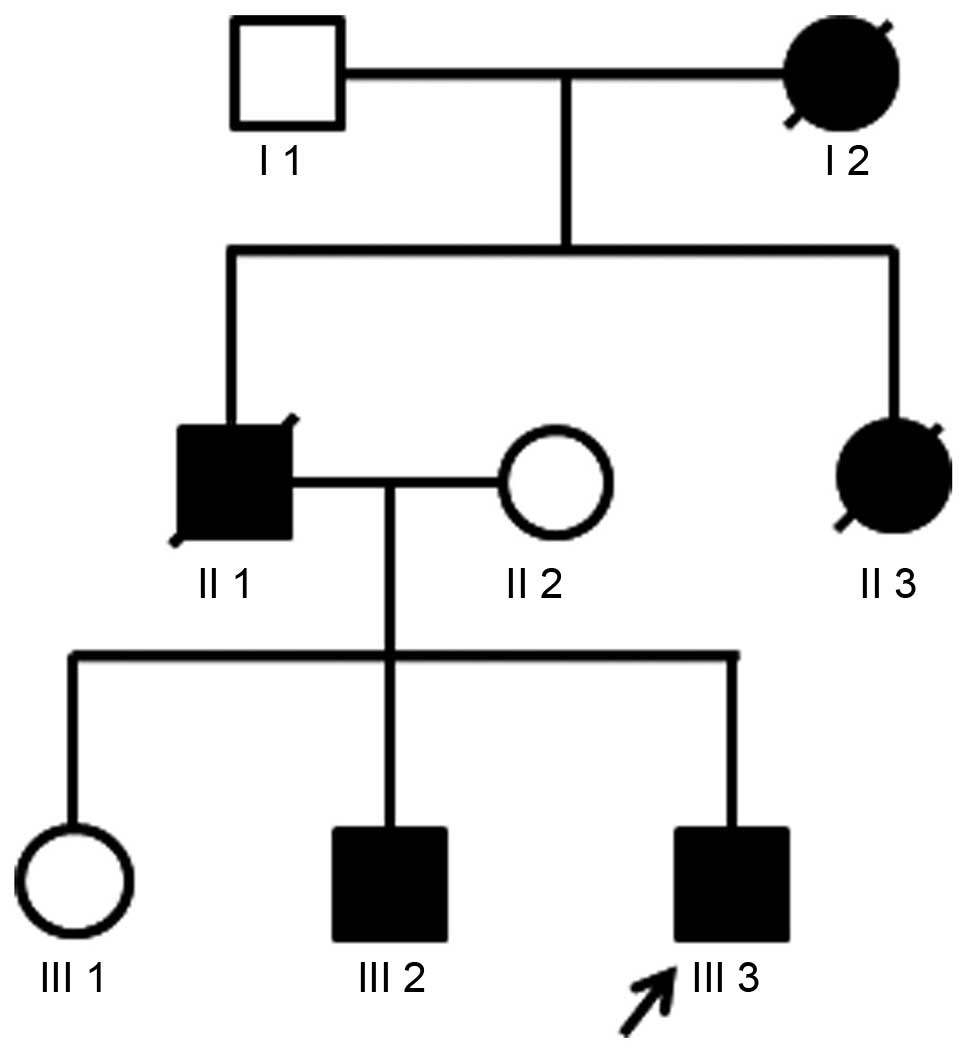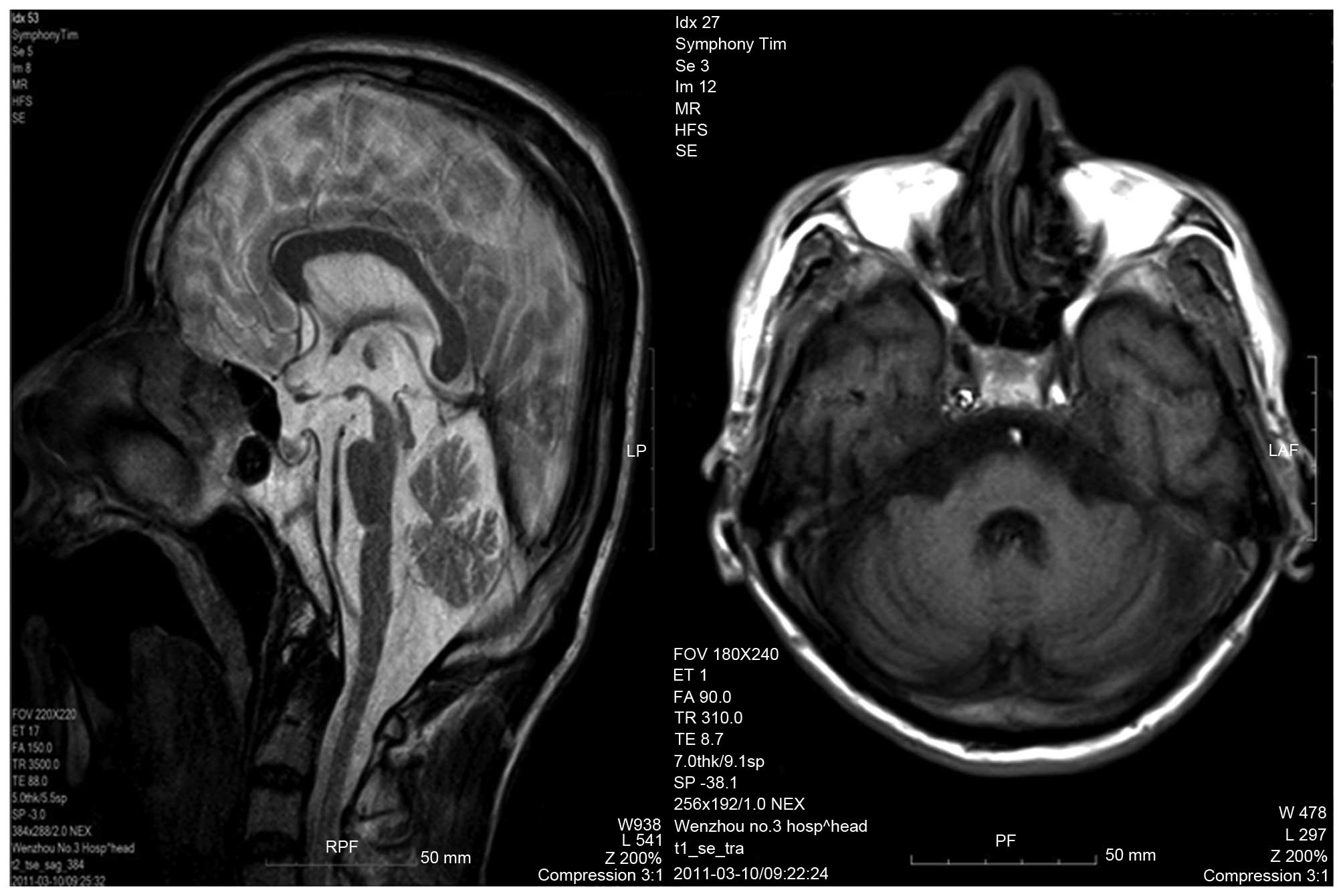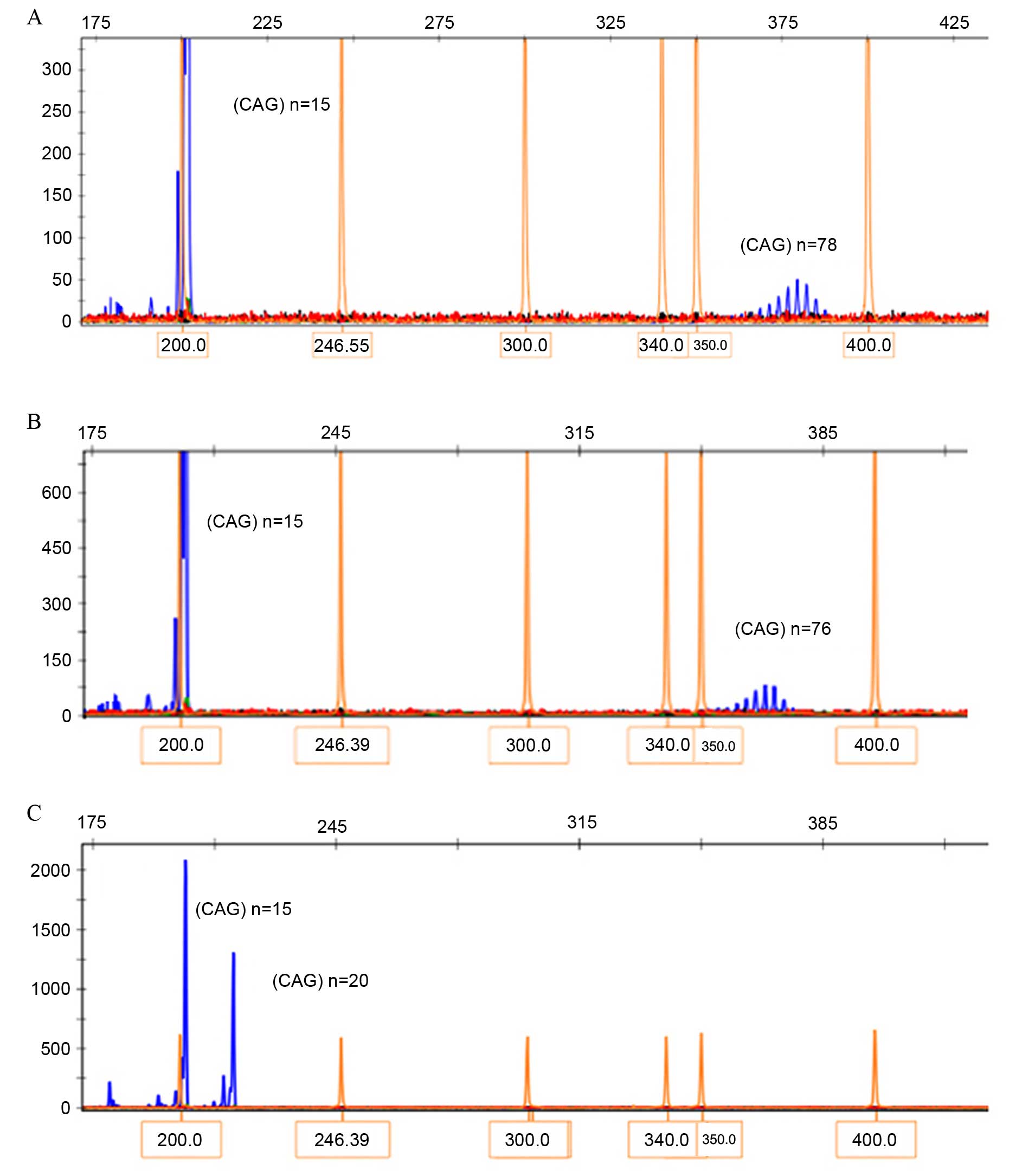Clinical features and genetic diagnosis of hereditary spinocerebellar ataxia 3
- Authors:
- Published online on: September 5, 2016 https://doi.org/10.3892/mmr.2016.5707
- Pages: 3731-3734
Metrics: Total
Views: 0 (Spandidos Publications: | PMC Statistics: )
Total PDF Downloads: 0 (Spandidos Publications: | PMC Statistics: )
Abstract
Spinocerebellar ataxia type 3 (SCA3) is a rare inherited autosomal dominant progressive neurological disorder, which results from a CAG‑repeat expansion in the gene encoding the deubiquitinating enzyme, ataxin‑3. At present, no effective treatment is available for this fatal disorder; however, certain studies have suggested that reducing the levels of mutant ataxin‑3 protein may reverse or halt the progression of disease in patients with SCA3. In the present study, clinical examinations were performed on a patient with SCA3 who exhibited disease features including coughing, expectoration and was bedridden with mobility limitation. CAG repetitions at SCA‑associated genes were detected in the patient's family by performing standard polymerase chain reaction (PCR) and triple‑repeat primed PCR. The numbers of CAG‑repeats within the two alleles of the gene of interest in the patient were 15 and 78. Notably, the patient's brother, who harbored 76 CAG‑repeats in one allele of the gene of interest, did not exhibit severe disease symptoms. These results suggest that the number of CAG‑repeats is a critical for determination of SCA3 disease severity and time of onset. In addition, the defined phenotypic characteristics of the patient in the present study provide useful insight for more accurate clinical diagnosis and genotyping of future patients.












